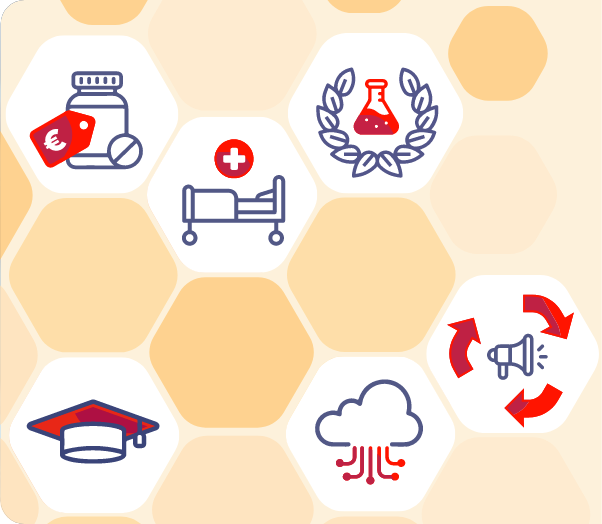In the Netherlands, there is no national approach for early detection of cardiovascular disease, kidney disease and type 2-diabetes in the general population, despite the social and economic impact of these disorders. The Check@Home consortium was founded to fill this gap and aims to lower the morbidity and mortality of cardiovascular disease, chronic kidney disease and type 2 diabetes by 25% in the next ten years, and thereby decrease the burden of these chronic diseases.
The Focus
Due to common risk factors such as high blood pressure, obesity and the aging population, the number of people suffering from cardiovascular disease, chronic kidney disease or type 2-diabetes is expected to increase excessively in 2030. A large proportion of people are not aware of having these diseases, as it is often present without overt symptoms. Fortunately, these chronic conditions can be detected at an early stage, allowing for adequate and early treatment to prevent (the progression of) these conditions and their complications. Check@Home aims to do so by developing a (cost-)effective national program that is accessible to all socio-economic groups and takes place in the citizen's own living environment, making it comfortable for citizens to do. It will also reduce the burden on primary care and contribute to the affordability and sustainability of healthcare. The program is designed and implemented in close collaboration with citizens, patients, and local citizen initiatives, to make sure that this program is a durable solution for all groups of society.
The Research
In total 160,000 people aged 50-75 years and living in Breda, Utrecht, Arnhem and Eindhoven, will be invited to participate in the study with a home-based test using the Check@Home digital platform. In case of early signs of cardiovascular disease, kidney damage or diabetes type 2, a targeted work-up will follow in a regional diagnostic center. If necessary, lifestyle advice and initiation of medication will be provided to relieve regular care as much as possible.
The Origin
At the request of several DCVA partners, including the Dutch Heart Foundation, which has earlier recognition of CVD highly prioritized on its national research agenda, the DCVA explored the potential for a national initiative to develop the first population screening for CVD in 2020. This resulted in the Check@Home consortium: a collaboration of multiple research groups, private parties, and research funders: NWO, the Dutch Heart Foundation, the Dutch Kidney Foundation and the Dutch Diabetes Fund.
